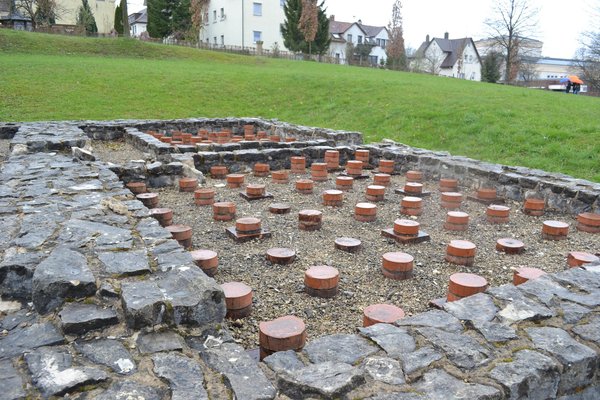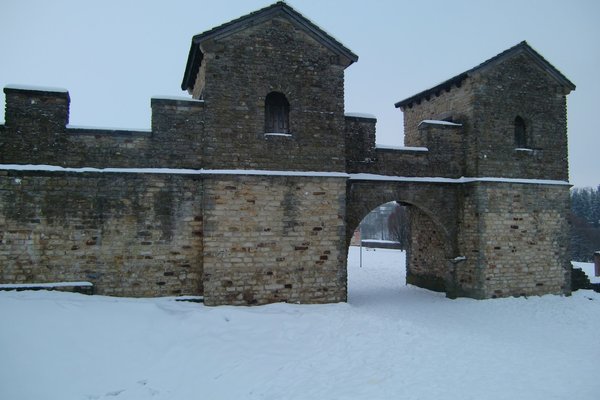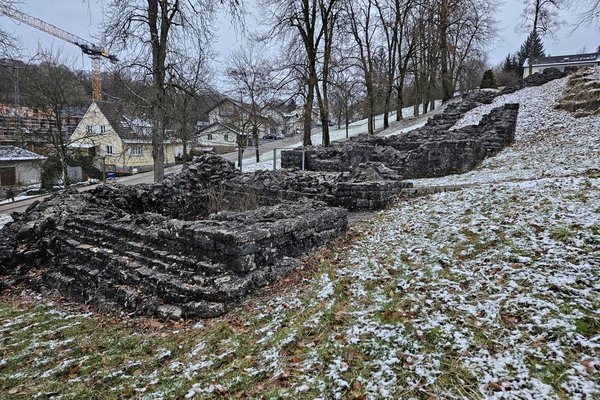Germany, United Kingdom
Frontiers of the Roman Empire
The Frontiers of the Roman Empire comprise significant remains of the Limes Romanus, a border defense or delimiting system of Ancient Rome.
It includes the Upper German-Raetian Limes, Hadrian’s Wall, and Antonine Wall, all built in the 2nd century CE in the northwestern part of the Empire. The Romans constructed military installations (forts, barriers, watchtowers, ditches) and related civilian settlements, linked by roads, to separate their citizens from the “barbarians”.
Community Perspective: The Roman Fort of Saalburg is the most visited part of the German component. The remains of Hadrian’s Wall can be admired on a hike (Ian), by the AD 122 bus, or by some selective exploration (James). Jay and Allan have covered a part of the (less well-preserved) Antonine Wall.
Site Info
Official Information
- Full Name
- Frontiers of the Roman Empire (ID: 430)
- Countries
- Germany United Kingdom
- Status
-
Inscribed 1987
Site history
History of Frontiers of the Roman Empire
- 2008: Extended
- To include the Antonine Wall
- 2005: Extended
- To include two sections of the Limes in Germany
- 1987: Inscribed
- Inscribed
- Type
- Cultural
- Criteria
- ii
- iii
- iv
Links
- UNESCO
- whc.unesco.org
- Official
-
- antoninewall.org — Antonine Wall
- deutsche-limeskommission.de — German Limes
- hadrianswallcountry.co.uk — Hadrian's Wall
- Related
-
- saalburgmuseum.de — Römerkastell und archäologischen Museum Saalburg
- britainexpress.com — Link
All Links
UNESCO.org
- whc.unesco.org — whc.unesco.org/
Official Website
- antoninewall.org — Antonine Wall
- deutsche-limeskommission.de — German Limes
- hadrianswallcountry.co.uk — Hadrian's Wall
Related Resources
- saalburgmuseum.de — Römerkastell und archäologischen Museum Saalburg
- britainexpress.com — Link
News Article
- Oct. 28, 2025 bbc.com — The discovery of a section of Hadrian's Wall has been described as a "once-in-a-generation" find.
- Sept. 28, 2023 bbc.com — Sycamore Gap tree at Hadrian's Wall 'felled overnight'
- April 25, 2023 livescience.com — Archaeologists have discovered the buried remains of a Roman fort along Scotland's ancient Antonine Wall.
- May 28, 2022 bbc.com — Lewd Roman insult found on stone near Hadrian's Wall
- Feb. 28, 2022 theguardian.com — Newcastle seeks its place on Hadrian’s Wall trail
- Aug. 14, 2021 theguardian.com — Part of Hadrian’s Wall discovered in Newcastle city centre
- June 23, 2018 telegraph.co.uk — Hadrian’s Wall nighthawkers ‘stealing knowledge’ from site, Historic England warns
- Feb. 20, 2018 theguardian.com — Rare Roman boxing gloves found near Hadrian's Wall
- Nov. 1, 2017 telegraph.co.uk — Why Hadrian's Wall is succumbing to foreign invasion after nearly 2,000 years
- July 14, 2015 cumbriacrack.com — New Hadrian’s Wall tour bus explores iconic World Heritage Site
- Feb. 11, 2015 chroniclelive.co.uk — Heritage crime concern on Hadrian's Wall because of illegal digging
- July 1, 2014 thejournal.co.uk — Wind turbine proposal close to Hadrian's Wall set to get the green light
- March 25, 2014 thejournal.co.uk — Funding for Hadrian's Wall Trust withdrawn
- Dec. 6, 2013 thejournal.co.uk — Adopt a stone campaign launched to help preserve Hadrian's Wall
- Dec. 6, 2013 culture24.org.uk — 5 year development plan for Antonine Wall
- Sept. 11, 2013 culture24.org.uk — Hadrian's Wall in half million pound refurbishment
- Jan. 22, 2012 bbc.co.uk — Hadrian's Wall experts mull removing illegal plaque
- March 15, 2010 dailymail.co.uk — Hadrian's Wall lights up to mark 1600th anniversary of the end of Roman rule
- Nov. 22, 2009 hnn.us — Plans have been unveiled to create a spectacular line of light from coast to coast, along the length of Hadrian's Wall
- Nov. 18, 2008 24dash.com — A new survey of the Hadrian's Wall World Heritage Site has revealed over 2,700 previously unrecorded historic features, including prehistoric burial mounds, medieval sheep farms and 19th century lead mines.
- Oct. 6, 2008 journallive.co.uk — Writing tablets found at Hadrian's Wall and currently in British Museum to return to Vindolanda museum
- July 12, 2008 cumbernauld-news.co.uk — The Antonine Wall has been accorded World Heritage Site status by UNESCO
- May 21, 2006 24dash.com — Spectacular brooch find may 'unlock secrets of Hadrian's Wall'
Community Information
- Community Category
- Archaeological site: Ancient Rome
- Secular structure: Military and Fortifications
Travel Information
Exact locations inscribed twice (or more)
Edinburgh Hotspot
Recent Connections
-
Perfect Inscriptions
1987 -
Modern Board Games
Hadrian's Wall (2021) -
Multilingual inscriptions
Arbeia Fort (South Shiled UK) was where…
Connections of Frontiers of the Roman Empire
- Individual People
-
-
Emperor Hadrian
Ordered construction of Hadrian's Wall
-
- Geography
-
-
Linear inscriptions
Hadrian's Wall, Antonine Wall -
Rhine
Limes ends at Rheinbrohl -
Contiguous National Sites
In Germany, with Upper Middle Rhine Valley
-
- Trivia
-
-
Total Solar Eclipse since Inscription
11 August, 1999 -
Modern Board Games
Hadrian's Wall (2021) -
Tourist Treks
Hadrian's Wall Path -
On Banknotes
Elsie Inglis and The Antonine Wall - 50 Scottish pouns - 2009 -
In Video Games
Hadrian's Wall in Assassin's Creed Valhalla -
Cultural sites closely connected to volcanoes
Whin SillSee en.wikipedia.org
-
Discovered from the Air
The Nomination File for the "Antonine Wall" contains numerous references (search on "Aerial") e,g "All the 20 camps along the Antonine Wall have been found through aerial survey and photography. None is visible today." and "Aerial survey and photography shortly after the Second World War led to the discovery of a new type of structure on the Wall: the fortlet." -
Serial sites with the greatest number of locations
414 -
Furthest distance apart
1,350 km /839 miles (Antonine Wall, Clydebank ? Bavarian Limes, Hienheim on the Danube)
-
- History
-
-
Archaeological 'Type Sites'
Birdoswald - a type site for the early post-Roman development of a Roman fort (see link)See www.dur.ac.uk
-
Celtic history
Hadrian Wall - built against the Celts -
Paid in Beer
Near Hadrian's Wall, the Vindolanda tablets include “a polite request for beer to be sent to the garrison (which had entirely consumed its previous stock of beer)”.See en.wikipedia.org
-
Limes
-
Historical Food Remains
carbonated remains of grains at Saalburg
-
- Ecology
-
-
Notable Trees
Sycamore Gap Tree (felled)See en.wikipedia.org
-
- Architecture
-
-
Early Under-floor Heating
"At the west end of Callendar Park, the Wall takes a turn to the south-west to negotiate a burn. Beside the burn, now covered over, a hypocausted room, presumably part of a larger building, has been located and excavated." - Nomination File
-
- World Heritage Process
-
-
Serial Transnational Sites
-
Extended
2005: To include two sections of the Limes in Germany; 2008: To include the Antonine Wall -
Extensions on Tentative List
8 separate extensions to "Frontiers of the Roman Empire" are on the tentative list: Austria, Croatia, Hungary, the Netherlands, Germany, Serbia, Slovakia, Tunisia -
Country gained extra WHS by an extension
Originally Hadrian's Wall (UK); 2003 Germany -
Extended more than once
2x -
Exact locations inscribed twice (or more)
Ravenglass is also part of the Lake District -
Perfect Inscriptions
1987
-
- Religion and Belief
-
-
Mithraism
Rudchester Mithraeum at Hadrian's Wall
-
- Human Activity
-
-
Historical Graffiti
Hadrian's Wall, Written Rock of Gelt: Roman quarry inscriptionsSee www.bbc.com
-
Golf Courses
Hadrians Wall runs thorugh Haltwhistle Golf Course. The Antonine Wall runs through the Golf Course Douglas Park. -
Erotic art
Roman Penises Carved into Hadrian’s Wall -
Petrosomatoglyphs
Vindolanda: a partial print of an adolescent’s right foot, dated to 160-180 CE, was found on a tile -
Multilingual inscriptions
Arbeia Fort (South Shiled UK) was where the Regina Tombstone was discovered. It is on display in the site museum. It contains an inscription in both Latin and Palmyrene Aramaic
-
- Constructions
-
-
Baths
Hadrian's Wall: Roman Baths of Vindolanda -
Granaries
Saalburg granary (now an exhibition room) -
Cycoliths (Stone circles)
Hadrians Wall, Location 430ter-182 "Stone circle, defended settlement, Romano-British farmstead & field system, Roman camp & group of shielings immediately south of Greenlee Lough" (UNESCO) -
Latrines
Hadrians Wall Housesteads -
Canals
Antonine Wall: when a new section of the Union Canal was built in 2000 a Tunnel was built under the wall to avoid damaging it. -
Frontier walls
-
- WHS on Other Lists
-
-
INTO Places Program
Hadrian's Wall and Housesteads Fort -
Located in a TCC Territory
Antonine Wall: Scotland -
Cultural WHS set within an IUCN recognised protected area
Hadrian's Wall is partly within the Northumberland NP - Northumberland falls under IUCN category V, Protected Landscape/Seascape
-
- Timeline
-
-
Built in the 2nd century
Hadrian's Wall - Construction commenced in AD122 Antonine Wall from AD 142 onwards. The inscribed sections of the German Limes were also 2nd century - this period was the apogee of the territorial expansion of the Roman Empire
-
- WHS Hotspots
-
-
Edinburgh Hotspot
Antonine Wall : the closest location is Carriden Fort (29km) -
Bavaria hotspot
-
Northern England hotspot
-
Frankfurt hotspot
-
Stuttgart Hotspot
-
- Science and Technology
-
-
Experimental Archaeology
Saalburg (large parts of a Roman Castellum reconstructed on the original spot, showing how the Roman army was organised and how Romans constructed their buildings)See exarc.net
-
- Visiting conditions
- WHS Names
-
-
Misleading WHS Names
This WHS only covers a tiny part of the frontiers of the Roman Empire, which stretch all around Europe and the Mediterranean. Also, other Roman Frontiers have been inscribed as separate WHS. 'Limes of the British Isles' could have been a good alternative here, however, a stretch in Germany is included as well which is known as the Upper German-Raetian Limes.
-
- Literature & Film
-
-
Asterix
Astérix chez les Pictes / Asterix and the Picts (Hadrian's Wall)
-
News
- bbc.com 10/28/2025
- The discovery of a section of Hadr…
- bbc.com 09/28/2023
- Sycamore Gap tree at Hadrian's Wal…
- livescience.com 04/25/2023
- Archaeologists have discovered the…
Recent Visitors
Visitors of Frontiers of the Roman Empire
- Adam Hancock
- Adrian
- Adrian Turtschi
- Afshin Iranpour
- ailsa
- Alberto Rodriguez Gutierrez
- Alexander Barabanov
- Alexander Lehmann
- Alexander Parsons
- Alex Goh
- alicemears
- Ali Zingstra
- ALS
- A. Mehmet Haksever
- Ammon Watkins
- Ana Lozano
- AndreaTLV
- Andrew_Kerr
- Anna Wludarska
- Anne
- Antonio J.
- Argo
- Artur Anuszewski
- AS
- Ask Gudmundsen
- Aspasia
- Assif
- Astraftis
- a.thum
- Atila Ege
- awestix
- AYB
- Bamse
- basementonline
- BaziFettehenne
- Bernard Joseph Esposo Guerrero
- bethready
- Bill Maurmann
- Bin
- Birgitte Sørensen
- BJGreasly
- BMuramatsu
- BobSmithseestheworld
- Bodil Ankerly
- Bram de Bruin
- Brandon J
- Brendan Carroll
- Brett Baumann
- Bropyk
- butterflybird
- Can SARICA
- Carlos Sotelo
- Caspar
- CeeCeeSR
- Celina Nanbara
- Cezar Grozavu
- cflw
- Cheryl
- CherylKla
- Chole Ross
- ChrisN
- Christian Wagner
- Christoph
- Christravelblog
- Claire Bradshaw
- Clyde
- Cobaltrage
- Col
- Colossus
- Corinne Vail
- ctravel
- CugelVance
- Damientournay
- Dani Cyr
- Daniela Hohmann
- Daniel Chazad
- Daniel Gabi
- dankir
- Danny L
- Dan Pettigrew
- David Berlanda
- del
- Digits
- Dimitar Krastev
- Dirk-pieter
- DjhMck
- Dolemite92
- Dorejd
- DouglasR
- Dr. Caligari
- Drk9Stormy
- Dwight Zehuan Xiao
- Echwel
- Elaine McArdle
- Elia Vettorato
- Ellen Nielsen
- Elliot
- Els Slots
- EmmonsLiu
- erdsaumnaht
- Eric Lurio
- Erik G
- Erik Jelinek
- Errol Neo
- Ertai
- Eva Kisgyorgy
- Evgenii
- fabi-ddorf
- Fam39
- Fan Yibo
- Farinelli
- Federico P.
- Feldhase
- Felicité
- Filip Murlak
- finsbury_jo
- FK
- flahr
- Flexiear
- forest80
- FrankW
- Frederik Dawson
- FS
- Gabbro
- Galgalula
- Gary Arndt
- gautamiyer23
- George Gdanski
- GeorgeIng61
- GerhardM
- Gernot
- Gilles
- Grzegorz Andruszkiewicz
- Hadrianus
- HaraldOest
- Harald T.
- Harry Mitsidis
- Hdwilsonau
- henrik_hannfors
- heywhatever2
- Hubert
- Hurrvinek
- Iain Jackson
- Ian Cade
- ih0000
- Ilya Burlak
- Ingemar Eriksson
- Ingrid
- Ivan
- Ivan Rucek
- Jacob Otten
- Jakob F.
- James Bowyer
- janem
- Janina Lehmann
- Jan-Willem
- Jan Zimmermann
- Jarek Pokrzywnicki
- Jarrod_Byham
- Jasam
- Javier Coro
- Jay T
- Jean Lecaillon
- Jeanne OGrady
- Jeffrey Chai
- Jens
- Jezza
- JL
- João Aender
- Joebobs
- Joel on the Road
- Jonas Hagung
- Jonas Kremer
- Jonas Martinsson
- Jonoprout
- jonstst
- JoshHad
- Joyce van Soest
- JR's HERITAGE SITES
- Jurre
- Just_hatched
- KarenBMoore
- Karito Vies
- Kasia M.
- Kasper
- Kbecq
- KentishTownRocks
- Kevin Padley-Knight
- Kjsisney
- Klaus Freisinger
- KngAlaric
- Knut
- KoenigMarke
- Krijn
- kristinapunzi
- Kurt Lauer
- La Concy
- Lameduck99
- Lara Adler
- Laurine
- leckie118
- leroykstlj
- lichia
- Lillybett
- Lindaflat
- Linz
- Lisu Marian
- Lithobates
- ljowers
- Loic Pedras
- Luboang
- Lucio
- lucyannesmith
- Ludvan
- Luis Filipe Gaspar
- Luj3904
- Lukasz Palczewski
- lynnz317@aol.com
- Maciej Gil
- Maciej Gowin
- Mahuhe
- Małgosia Łupicka
- Manuelfunk
- MarcoB_0
- marc Rouserez
- Martin
- Martina Rúčková
- Marty
- maryhattie
- Matthewsharris
- MAURO PODDA PANI
- Max
- MaxHeAnouBen
- MaYumin
- MH
- MichaelH
- michaelsballard
- Michael Turtle
- Mihai Dascalu
- Mikko
- Mikko Syrjä
- Milan Jirasek
- Miloš Tašković
- Ming_9734
- MMM
- MoPython
- Mstrebl1990
- MWaters66
- Naim Y
- nan
- Nasebaer
- Neil McPaul
- Niall Sclater
- Nick Kuzmyak
- Nicole Lampos
- Nihal Ege
- NoahFranc
- Nolan B.
- PabloNorte
- Pat Martin
- Patrik
- Paul Schofield
- Persian Globetrotter
- PeterA
- PeterH
- Peter Lööv
- Petri Jurescu
- Petteri
- Philipp Leu
- Philipp Peterer
- phillipmeng
- Piotr Wasil
- PlacesWeHaveBeenTo
- Potsdamer
- pressdm
- puessergio
- Rafał Kałczuga
- Ralf Regele
- Ralf Rotheimer
- Randi Thomsen
- ReallyDeepThoughts
- Reisedachs
- Reza
- Rick Ohm
- RobRos
- Rob Wilson
- Rodinia
- Roger Ourset
- Roman Bruehwiler
- Ronbon
- Rudegirl
- RyanJ
- Sabrina Liebehentschel
- Sandra!
- sbshipway
- Schnitzel
- SDMArado
- Sebasfhb
- Sehnsuchtsbummler
- serghei.belous
- Sergio Arjona
- Shandos Cleaver
- shoaibmnagi
- Simonh
- SirLoydd
- Solivagant
- Squiffy
- Ssong.x
- Stanislaw Warwas
- Stefan A. Michelfeit
- stephanvermeulen
- Stijn
- Svein Elias
- Szucs Tamas
- Tamara Ratz
- Tango
- Taotao Chen
- Tarquinio_Superbo
- Tatiana Nikulnikova
- Tevity
- Thomas Buechler
- Thomas Harold Watson
- Thomas van der Walt
- Thorben
- Timothy C Easton
- TimPick
- Tinamu
- Tom Flaten
- tommasorossotti
- tony0001
- Traveling Girl
- trekkie900
- triath
- Truls Brekke
- Tsunami
- Twobaconsandaboston
- usagi1974
- ValiaVeweth
- Vanessa Buechler
- vhorne
- Viaje al Patrimonio
- VLabhard
- WalGra
- Walter
- Waters88
- Waxwing
- WestcountryWanderer
- Wojciech Fedoruk
- Wo_ko
- wrung24
- Xiong Wei
- Xiquinho Silva
- Yang Chengyu
- YaroMir
- Yevhen Ivanovych
- Yongcheng Liu
- Zach
- Zoë Sheng
- Zos M
- Александар Стојиљковић
Community Reviews
Show full reviews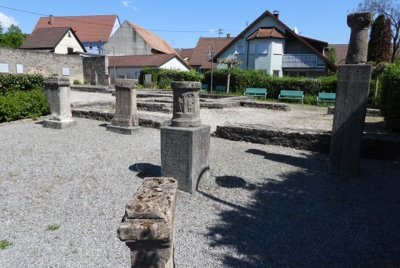
Visit date(s): May 1, 2025
Nearby sites on trip: Over 2 weeks: Bamberg; Potsdam; Primeval Beech Forests, Serrahn; Stralsund and Wismar; Lübeck; Green Belt (T), Schaalsee; Schwerin Residence Ensemble; Berlin Modernism Housing Estates, Wohnstadt Carl Legien; Museumsinsel.
Overnight location: Stuttgart before, Bamberg after
Location(s): Antonine Wall (August 2004), Hadrian’s Wall (spring 1996), German Limes: Fort site and civil settlement of Jagsthausen central and eastern part (Römerbad, 2025, present review focus and photo)
Travel method(s): Car. We were crossing the Roman frontier, so I looked for a site that wasn’t far off our route. We also saw a sign along the road when we crossed the Limes.
Travel duration: ~1-2 hours between accommodations and site
Visit duration: less than 1 hour
OUV: Hadrians Wall is the most complete of the three frontiers. We travelled the length of it years ago and enjoyed stopping at each location along the way. The Antonine Wall and German Limes could be tackled in a similar way, but I’m not sure there are modern routes that parallel as nicely, so it might involve quite a bit of weaving around. However, if we’re on a route that crosses either, parks with Roman remains make interesting rest and stretch stops.
Best of: Information plaques showed how the artefact pieces fit into the Roman structures.
Worst of: Individual sites are small and isolated, so visiting several may require some travel.
Keep reading 0 comments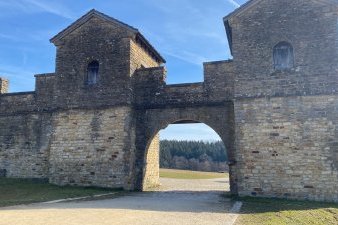
I visited the Ostkastell in Welzheim, Germany, and it turned out to be a pleasant surprise. The site is vast, and while I only explored a single fort, it was still an interesting experience. The walk through the area was enjoyable, with informative signposts and a few statues adding to the atmosphere. I wrapped up my visit with a run through the nearby woods, which made for a great combination of history and nature.
Keep reading 0 commentsBernard Joseph Esposo Guerrero
Frontiers of the Roman Empire
Frontiers of the Roman Empire (Inscribed)
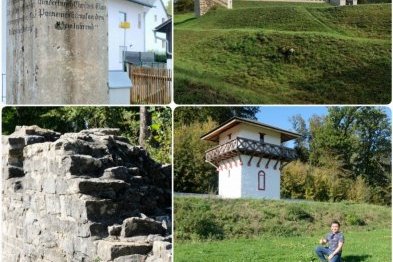
In driving around southern Germany, I managed to see two components of the Upper Germanic-Rhaetian Limes, dubbed as the longest monument in Europe at 550 kilometers long. The first one is Castra Vetoniana in Pfünz (Bavaria) and the other is the Double Fort in Osterburken (Baden-Wurttemburg). The weather forecast was not promising when we headed out for Ingolstadt. On the way, as predicted, it started to rain and we could only hope for that it would stop as we got nearer. Lying on top of a hill, Castra Vetoniana provides a commanding view over the village of Pfünz. Thanks to the rain, the parking lot was empty and so we had the whole site to ourselves. Luckily, after five minutes, the sky cleared up, and the structures were better revealed to us — indeed, a most pleasant introduction to the Limes!
As with most Roman cohort camps, Castra Vetoniana had defensive ditches and walls, as well as several buildings within. A section has been carefully reconstructed, allowing visitors to visually interpret the site. The recreated section comprises a tower, a gate, and the curtain wall that connects the two structures. We walked by the wall and then along the earthen trenches, reading a few information boards installed on the way. The patina-covered remains of the other three gates have been recovered and exposed for viewing too. It was also in Pfünz were I first saw a Römersäule (first photo), one of the nine historic stelas erected in …
Keep reading 0 comments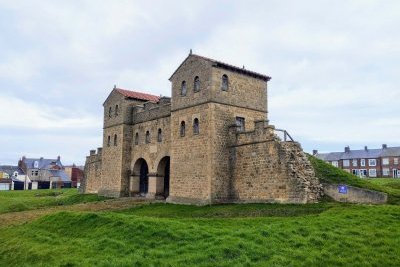
If you zoom in on the Map of Hadrian’s Wall on this Web site above you will note, on the far right, separated from the closely spaced locations along the Wall, another black dot titled “Roman Fort South Shields” – more commonly known as “Arbeia”. Whilst in no way suggesting that anyone should miss out the iconic central section of the Wall (situated in “wild country”) by giving this site (situated in a housing estate!!) preference, knowledge of its existence and merits might be prove to be of use to those with particular interest in “matters Romano-British” or whose travel logistics suit a visit to this most easterly element of the Hadrian’s Wall inscription.
Despite having lived within 40 miles of it for over 30 years we had never visited, but did so in March 2024 and were reasonably impressed. We had previously dismissed it as a “minor fort” which had received investment in 1986 in the form of a reconstructed Gateway looking similar (Photo), but in “pale comparison” to the massive reconstruction at Saalburg initiated by Kaiser Wilhelm II in 1897. Now, he had his own late 19th C German nationalistic and militaristic “reasons” for his project but, more recently, such reconstructions have been regarded as controversial. Apart from occasional examples where Hadrian's Wall has been filled in/stabilized for mainly conservation purposes, I think I am correct in stating that this is the only place to have been given a “full” reconstruction for “presentation” …
Keep reading 0 comments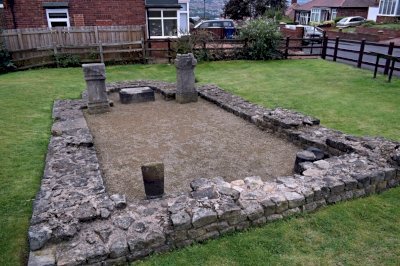
Much has been said about the highlights of Hadrian’s Wall, particularly the area around Housesteads and Vindolanda, and these are indeed best-preserved sections so should be top of the list for anybody who has not visited before. Rather than add to this, I thought I would offer some insight into the more obscure sites for those in the area for longer. Starting at the easternmost edge, the fort of Arbeia guarded the mouth of the River Tyne and features some original foundations as well as a reconstructed gatehouse and barracks. Arbeia is close to South Shields metro station, which has regular connections into the centre of Newcastle via Bede station, from which it is a short walk to the tentative WHS of Jarrow Monastery. Across the Tyne to the north, the fort of Segedunum marks the start of the cross-country Hadrian’s Wall long distance walking path but is less impressive as only the shape of the foundations survives with few original remains but the signage at the nearby Wallsend metro station is in both English and Latin, which offers some amusement. Depending on who you ask, the area is perhaps more famous for Wallsend Boys Club, the football (soccer) club that produced such great players as Alan Shearer. Further west, but still within the urban sprawl of Newcastle, a small shrine (see attached picture), section of vallum crossing, and parts of the wall can all be seen in the area of Benwell. Whilst not the most impressive remains, it is …
Keep reading 0 comments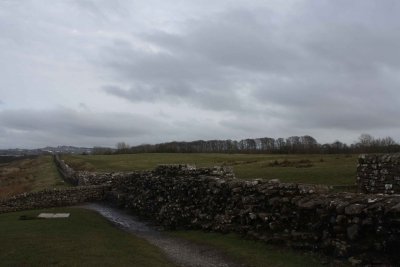
March 2018 - After our stay at the Lake District we continued our Journey to Newcastle.
We looked for the nicest route which was always along the Hadranwall. Most parts however were not very spectecular, but some other parts whereas were quite interesting. We made a few foto stops, but at the end the whole drive to Newcastle was very fast.
The German Limes we haven't really visited yet.
Keep reading 0 commentsAllan Berry
Frontiers of the Roman Empire by Allan & Lucia
Frontiers of the Roman Empire (Inscribed)
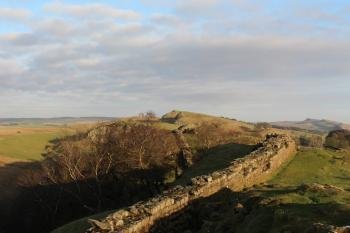
Of all the WHS on the list, I’ve been to Hadrian’s Wall the most. Growing up, it was the closest, and as such, I’ve visited most of the best preserved sections: Birdoswald, Walltown, Halsteads, Vindolanda, Chesters. How best to officially ‘mark off’ such a familiar site?
We chose to walk a 10 mile section of the wall, from the Walltown Quarry section all the way to Halsteads fort, on a blustery but clear December afternoon, which really added to the atmosphere. This section represents the wall at its best preserved and most dramatic, and truly gives an impression of what the Roman soldiers posted along the wall must have felt, being on the fringes of the empire. The walk along the top of the ridge was very pleasant, though can be a little taxing in places. Halsteads is personally my favourite of the surviving fort remains, though if you’re not a member of English Heritage, it will cost you to get in. I would wholeheartedly recommend it. The AD 122 bus is very helpful for getting about, and let us get back to our parked car with little issue.
Earlier that year, we also visited the Antonine Wall in Scotland. Stretching from the Clyde to the Forth, the Antonine Wall is the northerly sibling to the more famous Hadrian’s Wall. Occupied for far less time, the Romans constructed a more temporary structure, and as such, much of it was constructed out of dirt rather than stone. Compounding the problem, the …
Keep reading 0 comments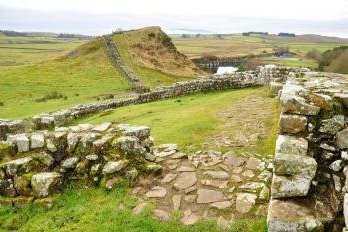
In August 2006 I visited the Roman fort of Saalburg, a part of Upper German-Raetian, and at that time I wrote a review that the German section of this World Heritage Site was not well known compared to its counterpart in England because the German Roman frontiers were hard to see as it was almost entirely built by wood and right now most of them are just many small traces on the grassland or the few stones in the forest. It was really hard for normal people to appreciate this site. The only place you can get some imagination of Roman fortress is Saalburg, just north of Frankfurt, which has a fully reconstructed fort and good museum. Saalburg Fort has been mentioned in ICOMOS document as the only new reconstruction part of German-Raetian that ICOMOS accepted as a WHS, so it tells you something about the quality of this place. At that time, the best way to see Saalburg was to take a train to to Saalburg via Bad Homburg and followed the hiking route to "Romerkasteel Saalburg" for about 2 km. I remembered that I walked through lovely forest and saw some traces of the Raetian which was quite fascinating to see some ruins left in the German forest, after a good long walk in nature it was quite shocking to discover that Saalburg fort is just next to a very busy German Highway.
A decade later in December 2016, I have visited the most famous …
Keep reading 0 comments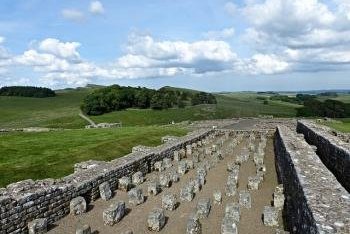
I visited the Hadrian's wall in June 2016. I'm glad I had visited Germany's Limes first as my expectations were low and moreover I could appreciate the OUV of this transnational site. I was lucky to visit on the only day without rain for days on end, so much so that I spent a whole day here instead of a couple of hours before heading to Durham. As I drove westwards from Newcastle I made a couple of stops along the road to Carlisle. Most of the car parks are not free, however the pay and display ticket is valid for all the car parks. I visited the remains at Carrowburgh: Temple of Mithras and walked quite a stretch along the hadrian's wall path there to see the parts where the wall is still covered by grass and soil and a great grazing spot for sheep. After a long walk, I went back to the car park and drove to the Roman auxiliary fort of Vindolanda. Although this is the largest set of ruins and also the oldest (it predates Hadrian's wall!), I felt it was geared too much at attracting childrens' attention and at times it felt like a school outing hotspot. Next I drove a couple of kilometres past Housesteads Roman Fort and parked next to a visible part of Hadrian's wall with very big stones, a few metres from the main road. This helped me appreciate the seemingly neverending length of the wall across the rolling hills …
Keep reading 0 comments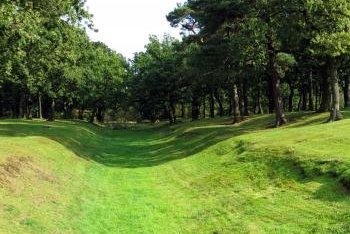
The Antonine Wall in Scotland, constructed almost 1900 years ago, was the northernmost Roman barrier in Europe, and became the newest extension to the Frontiers of the Roman Empire World Heritage Site in 2008. I visited one section of the wall at Rough Castle Fort on a sunny afternoon in September 2015. Rough Castle is very close to the Falkirk Wheel, so I parked by the wheel and continued on the path above the canal to the site of the fort on the Antonine Wall. Unfortunately, because the wall was turf-covered and the wood structures are no longer extant, not much is left to see. The most striking feature is a defensive ditch with a turf-covered rampart. Beyond the rampart are foundations for former structures, such as a barracks and a bath house, and most have helpful placards to provide context. I found the section of the Antonine Wall at Rough Castle Fort to be peaceful and interesting to explore, and I look forward to some day seeing other components of this World Heritage Site in England and Germany.
Logistics: The Antonine Wall stretches across Scotland between the Firths of Forth and Clyde, and is accessible by car and foot; the sensational Falkirk Wheel made a good base for parking and hiking to Rough Castle Fort.
Keep reading 0 comments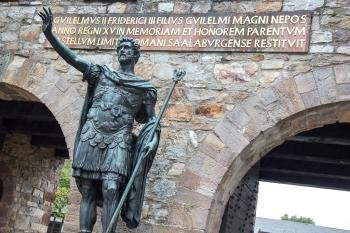
There are lots of ways to see this WHS - in two countries. I have been to the UK's Hadrian's Wall site, but for the German bit, I focused on Saalburg Roman Fortress near Bad Homburg. It is the only Roman fortress in the world to be rebuilt and is imposing on a hill with large external walls guarding the buildings inside.
If a reconstructed Roman fort is not your thing but you’re in the area near Saalburg, another option is to go exploring yourself. In the forests nearby are relatively untouched Roman ruins and visitors are free to hike along the trails and discover things for themselves.
In fact, it’s the same along much of the original boundary wall that stretches across the Germany. Although there are official sites that have been protected or restored, there’s still a lot which is just out in the open. Because the original route of The Limes covers so much of the country, it’s easy to come across a part of it on your travels and see what there is to visit in the area.
Keep reading 0 comments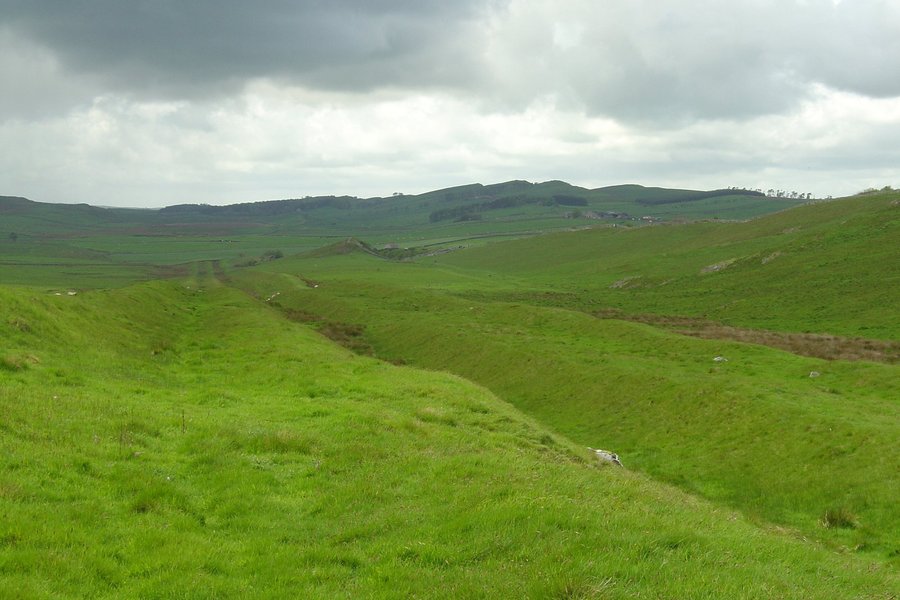
I visited Hadrian's Wall in October 2015 whilst in the area for a family reunion. We walked a circular route of about 10km, starting in the Northumbrian hamlet of 'Once Brewed', walking along the wall and taking in two of the ruined Roman forts - Housesteads and Vindolanda (although without paying to enter them).
There is quite a view of the lakes below from the ridgeline between Once Brewed and Housesteads, so I can recommend it as a section worth visiting. Having said that, there was little to see but fog when we went.
Hopefully somebody can visit and review the Antonine Wall for us, since nobody seems to have covered this recent addition yet.
Keep reading 0 comments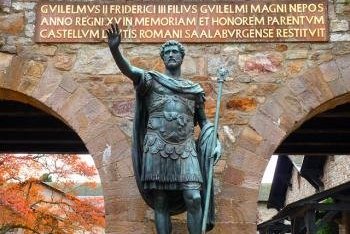
I visited the German Limes and Roman Fort of Saalburg in Bad Homburg in October 2013. The Limes are the only original stone remains still in place today in Germany. The rest was mainly made of wood and therefore only reconstructions can be seen. Having said this, the Roman Fort in Saalburg really gives you a concrete idea of the importance attached to control the borders of the Roman Empire. There are several informative posters in German and English as well as several artefacts excavated from this site. The price is reasonable and parking is free. Hopefully I'll have the opportunity to visit Hadrian's Wall in the near future but I'm glad I visited the German sites first.
Keep reading 0 comments
I visited the Roman Museum in Aalen which is east of Stuttgart along B29 road. It is a museum built at the site of a roman cavalry fort along the Limes. Actual ruins of the fort outside. Several other places along the Limes i identified and preserved or rebuilt. There is also a Trail along at least parts of the Limes in Germany, look for "Limeswanderweg" in your search programme.
As Limes mainly was built of wood, it is not likely much could survive up to now. They have rebuilt tower for guardians some 10 km east of Aalen and in the same areas are some other sites to look at.
Keep reading 0 comments
I had previously resisted the temptation to tick off this site by visiting the remnants of Hadrian’s Wall in suburban Tyneside, so to do the site some justice I decided to walk a craggy 20km stretch of the wall between Once Brewed and Chollerford on an overcast Saturday in June.
This was an exceptionally rewarding walk taking in the wall at its scenic best. The first section from Once Brewed until Housesteads was particularly impressive, especially the dip down to Sycamore Gap. It was a fairly strenuous trek, but the wall was continuously visible on this stretch and viewing it meandering up and down the hills was really rewarding. It was surprising just how much archaeology there is at this site. We had a look at ruins at Houseteads and Chesters, both of which were large sets of ruins and would be worthy of inscription by themselves, however there were turrets, milecastles and remains of temples popping up consistently along the 20km we walked. It must be a real delight for archaeologist to know just how much information they can gain from these sites.
Like many others here we used the AD 122 bus which was a very useful way of getting to the start of our walk, and I imagine would be exceptionally useful if wanting explore the sites along the wall without your own transport. I runs from Newcastle which I think is one of England’s most interesting cities so gives you a chance to mix and urban …
Keep reading 0 comments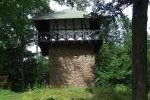
Having now visited the boundaries of the Roman Empire in Britain and Germany I must say that the British wall is much more visible, and accessible thanks to the AD122 bus. Saalburg is indeed an interesting reconstructed fort in a pleasant forest location on a hilltop. I reached it by bus from Bad Homburg. From the fort I walked downhill through the forest passing several marked watchtower foundations along the way, to reach Saalburg station.
Near Neuwied on the Rhine I found some excavations of Roman Baths in Niederbieber, and a reconstructed watchtower on a hilltop in Oberbieber. Both were reached by bus # 101 from Neuwied.
In Miltenberg on the Main river there is an interesting museum displaying a number of Roman artifacts found along the Limes in that area.
In Aschaffenburg I visited the Pompejanum, a reconstructed Roman villa.
Near Konigstein in the Taunus I visited Kleine Feldberg, an excavated fort and bathhouse up a track from the Rote Kreutz bus stop at Glasshutten.
There are many other locations worth investigating listed on the Limesstrasse website, but they recommend travelling by bicycle if you want to travel the whole distance.
Keep reading 0 comments
As a proud Northumbrian I have a keen interest in what happens to Hadrian's Wall. This summer I have been looking at it in depth for part of my University work. Visiting Vindolanda for the first time in about ten years, as well as Housesteads for the first time ever, has been very enjoyable - despite the dismal weather during my visit to the former. For anyone who does not have the benefit of a car to get around, using the AD122 bus is a must.
Also, this summer I took a trip to Germany to visit Saalburg for myself. It is genuinely a fascinating place. In terms of value for money it was excellent. The bus fare from Bad Homburg station, as well as the entry fee, were both very reasonable. For any aficianados of Roman history, visiting Hadrian's Wall and Saalburg are a must!
Keep reading 0 comments
After a long period of aggressive expansion, the time had to come for one Roman emperor to put a stop to it and say out loud that Rome was not actually destined to rule the entire world and that the Empire had to have stable borders. This man was Hadrian, and to secure the borders of the Province of Britannia, he had this magnificent wall built between the coasts of the North and Irish Seas to separate, as the famous statement goes, "the Romans from the Barbarians". (Later, though, the borders were pushed even further north, when the Romans built the Antonine Wall in today's Glasgow-Edinburgh area and the south of Scotland was also part of the Empire). Breathtaking views make a hike along the wall a wonderful experience (and you can see the oaktree featured in "Robin Hood, Prince of Thieves"...) that nourishes your body as well as your mind. Roman history and their way of thinking rarely can be appreciated so closely. It is surprisingly easy to visit the Wall, at least coming (as I did) from Newcastle, where the AD122 bus waits for you. The sites of Vindolanda, Housesteads, and Chesters are especially interesting and give a great overview of the area's history and archaeology, especially about the Romans' daily life. Many letters from the soldiers posted here have survived, and some are quite funny, such as the auxiliary troops from Spain and Syria complaining about the miserable weather. I went there on a glorious (but probably …
Keep reading 0 comments
In our trip to Germany we have visited the Roman fort of Saalburg, part of the 220 kilometres Limes barrier Raeatian section, one of the walls that have been marking the boundaries of the Roman empire for some centuries. The original fort (90 AD) covered an area of about 0,70 hectares and had a rectangular plan with corner towers. In 135 AD was built a larger fort, of 3,2 hectares (221 by 147 metres), over the earlier one, with four gates, a stone and timber defence wall with rampart walk and a double ditch. The remains of many internal buildings have been excavated and entirely reconstructed in stone and timber under the emperor William II. There are the granary, the commander’s quarters, the barrack blocks for the common soldiers and the headquarters buildings with the monumental assembly room the colonnaded courtyard, the rooms, the offices and the armouries. Interesting are the reconstructions of a barrack room, home to a squad of eight soldiers who lived in close quarters, of the richly decorated officer’s dining room, of the regimental shrine, the spiritual and religious centre of the fort, of the ovens and of the “restaurant”. Between the remains of the civilian settlement just outside the fort there is a bath house, a guest house, the cellars and the wells of the private houses and the reconstructions of the Jupiter column and of the Temple of Mithras. Near the fort there is a reconstruction of the limes at an ancient border crossing …
Keep reading 0 comments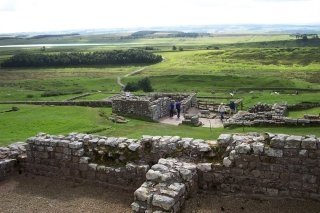
I toured the eastern part of Hadrian's Wall by bus from Newcastle, in the appropriately named AD122. This public bus stops at all things worth seeing along the way, so you can hop off and catch a later bus after you've visited the site. A good service I think.
My first stop was at Housesteads, the remains of a fort just at the wall. Because it was built on a hill, there are fine views over the countryside here.
Vindolanda is a bigger complex, somewhat inland from the wall. This Roman site is actually older than Hadrian's wall itself. Archeological excavations are still underway here, and some reconstruction has been done so it is easier to imagine what it looked like in ancient times. It's also the finding place of the historically quite spectacular Roman writing tablets, that tell about daily life in this area in Roman times.
Keep reading 0 comments

